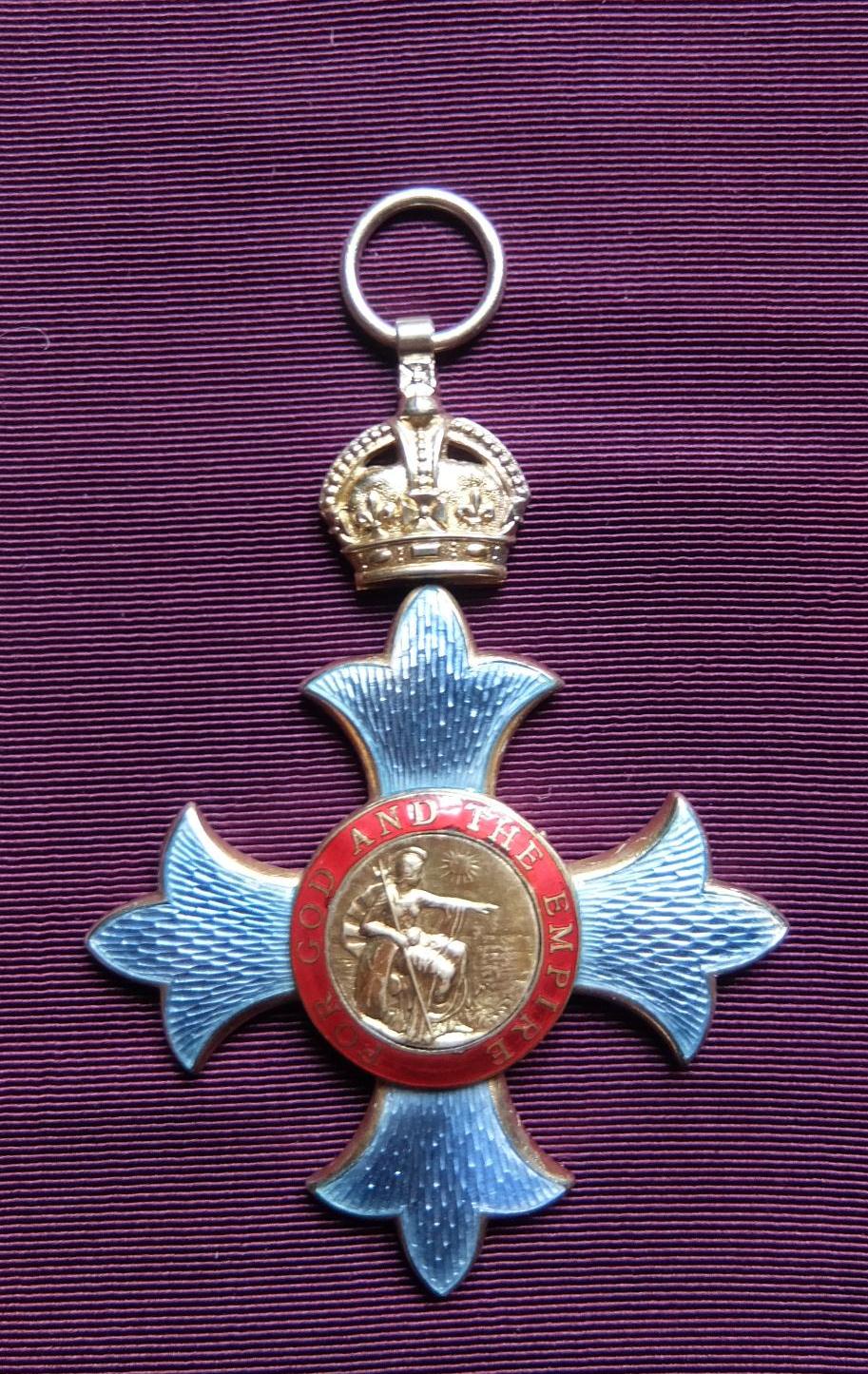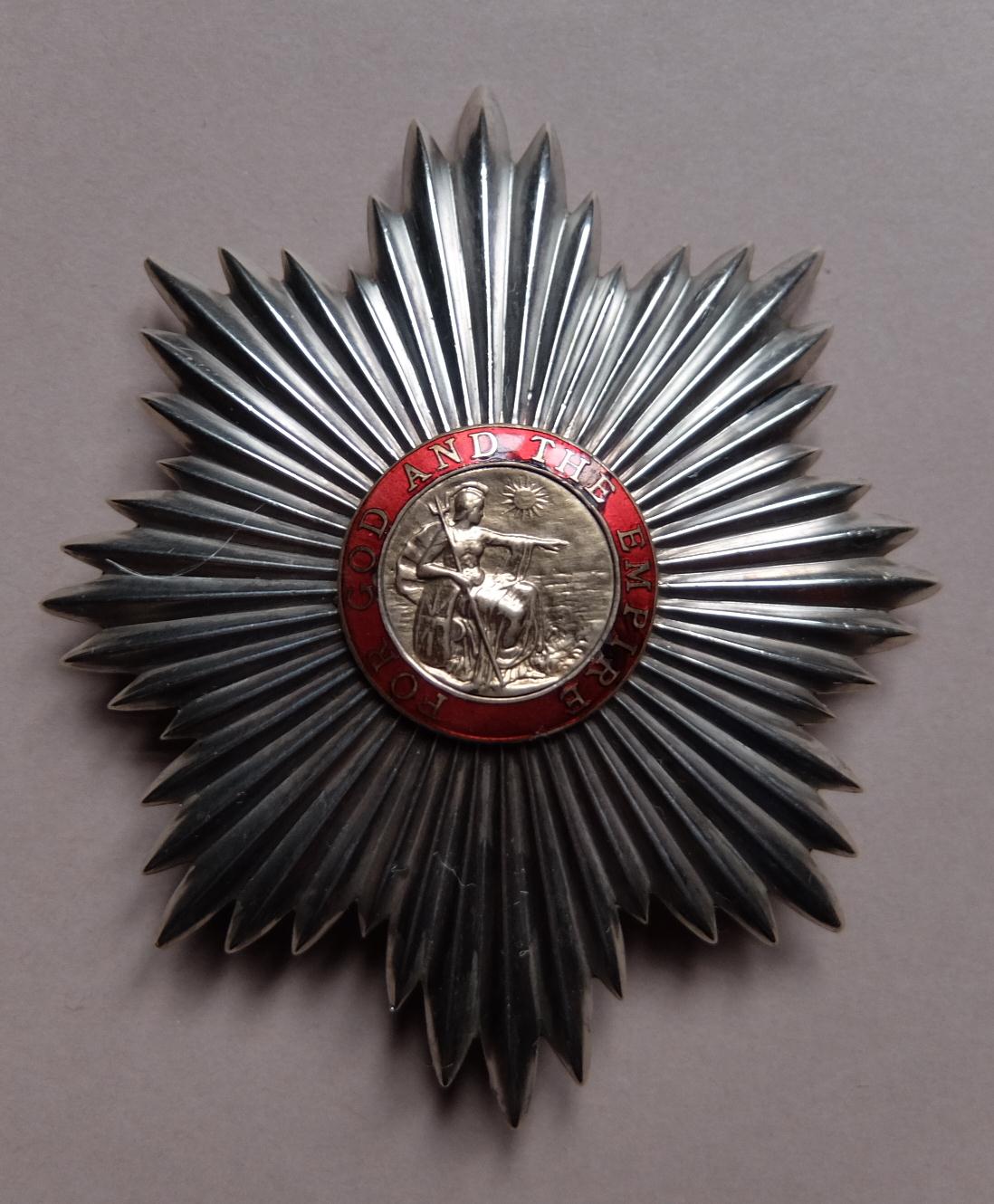The Order of the British Empire (part one): 1917 to 1922
 The Order of the British Empire celebrated its centenary on 4 June 2017.
The Order of the British Empire celebrated its centenary on 4 June 2017.
This important element in the imperial honours system was instituted in the early summer of 1917, during the premiership of David Lloyd George, thanks largely to the work of senior political and royal household colleagues, and in particular, the efforts of Sir Frederick Ponsonby, the quaintly named keeper of the privy purse.
The Order was designed to reward service in World War 1, for which it was decided that existing awards were largely unsuitable. This new form of honour was announced in a London Gazette of 24 August 1917, which explained that ‘The King has been pleased, by Letters Patent under the Great Seal, to create and institute an Order of Knighthood to be styled ‘The Most Excellent Order of the British Empire’, and published the original statutes, together with the names of the founder members (Gazette issue 30250).
The new Order
The membership was divided into five classes, headed by the knights and dames grand cross (GBE), then the degrees of knight or dame commander (KBE/DBE), commander (CBE) and officer (OBE), with members (MBE) at the lowest level. There was also an associated medal, which evolved into the present British Empire Medal (BEM).
Appointments were made by warrant signed by King George V and the Prince of Wales (later Edward VIII) in his role as grand master of the Order, a position held by the Duke of Edinburgh since 1953.
Members’ badges consisted of a crowned cross – in silver (for members), silver gilt (officers) or silver gilt and enamel (higher grades) – which showed Britannia with the motto ‘For God and the Empire’ on the front, and the imperial cypher, GRI, on the reverse. The badges were suspended from a purple riband, while holders of the first and second classes were also entitled to wear a silver breast star.
The statutes described the role of the Order in very general terms, and explained that it was intended to reward those who had ‘rendered... important services to Our Empire’, while the medal was for ‘service to Our Empire [which] would warrant such mark of Our Royal appreciation’.
The initial list of members and medallists was headed by Queen Mary, and incorporated nominations that recognised work in welfare bodies such as the War Refugees and the Internment and Repatriation Committees, whose chairmen – including Herbert Gladstone, the son of the prime minister – were founder GBEs. Individuals were honoured for raising funds to support the war effort, as well as caring for those affected by the conflict, including personnel from the Soldiers’ and Sailors’ Families Association. The first OBE was Wilfred Balgarnie of the British Red Cross Society (Gazette issue 30250), while the first MBE was Rachel Ard, the commandant of a hospital in Tunbridge Wells that provided voluntary nursing services (Gazette issue 30250).
Nominations came from wartime departments, including the Ministries of  Blockade and Munitions, and rewarded the men and women involved in armament manufacture,
munitions production, factory construction and much more. A notable founder member
was William Bragg of the Admiralty’s Invention and Research Board, who added the CBE
to his existing Nobel Prize for physics (Gazette issue 30250).
Blockade and Munitions, and rewarded the men and women involved in armament manufacture,
munitions production, factory construction and much more. A notable founder member
was William Bragg of the Admiralty’s Invention and Research Board, who added the CBE
to his existing Nobel Prize for physics (Gazette issue 30250).
Several appointments acknowledged the contribution of organised labour, including the first CBE for William Appleton, the secretary of the General Federation of Trade Unions. Appleton was joined – but at the GBE level – by the most senior political figure from the start, Sir Eric Geddes, who had helped to solve transport problems on the Western Front before directing British naval policy as first lord of the Admiralty, where he was responsible for replacing Sir John Jellicoe as first sea lord.
The first British Empire investiture took place at Ibrox Park in Glasgow on 18 September 1917, during the King’s visit to the shipyards and industrial plants of central Scotland. The ceremony opened with the presentation of GBE insignia to Lord Strathclyde, the chairman of the Scottish War Savings Committee, while the crowd of thousands cheered when the King handed the medal to a munitions factory worker, Lizzie Robinson. Most of the other founder members were invested a week later at Buckingham Palace.
The remaining nominations of 1917 marked services in India, and by the end of the year, just over 300 members had joined. A rapid increase followed, with candidates coming from across the empire, including awards for citizens of Australia, New Zealand and South Africa. The first promotion in January 1918 saw Henry Fowler exchange the CBE he earned in the Gun Ammunition Division of the Ministry of Munitions for a KBE, which acknowledged his contributions as superintendent of the Royal Aircraft Factory at Farnborough.
The other awards of 1918 included a CBE for Clementine Churchill, wife of the then future prime minister, for work with the YMCA, and honours for two well-known aeroplane designers, Thomas Sopwith and Geoffrey de Havilland. Nellie Melba, the prima donna who organised patriotic work, became a DBE (Gazette issue 33280), while the war artist William Orpen was made a KBE (Gazette issue 30730).
An OBE for Major Alwyn Dale was gazetted as being ‘for an act of gallantry not in the presence of the enemy’ (Gazette issue 30730) and was the first in a series of appointments for bravery that evolved into a separate sub-group of the Order with distinctive insignia, which was set up in 1957 and ended in 1974, because of the creation of the Queen’s Gallantry Medal.
The military division
The most obvious omissions from the early lists were awards of a purely naval and military character, but this changed in August 1918, when the British Empire was used to recognise service in the 1914 to 1915 operations in German South West Africa (now Namibia). Four months later, on 27 December 1918, it was announced that a military division was being instituted within the Order, and that its insignia would be distinguished by adding a vertical red stripe to the centre of the riband (Gazette issue 31084).
War work was rewarded on an unprecedented scale from the start of 1919, until changes were made to the Order at the end of 1922. Most of the military division nominations marked service in France and Flanders, but there were also grants for other campaigns including Egypt, Italy, Mesopotamia and Salonika.
The British Empire operated in tandem with some of the older orders, which were open to the armed forces, including the Bath and St Michael and St George, while grants of the British Empire’s medal had a more complex interaction with existing honours.
Military division nominations for the war came to an effective end with the Gazette notice of 12 December 1919, which explained that the rewards notified in that edition ‘constitute the final war Honours list... for services in those theatres of war in which hostilities have not continued since the armistice and for services in connection with the war elsewhere, India excepted’ (Gazette issue 31684).
More than 20,000 individuals had earned a British Empire badge or medal by the end of 1919, with a few going to particularly interesting recipients, including KBEs for John Alcock and Arthur Brown after their trans-Atlantic flight from Newfoundland to Ireland (Gazette issue 31422); a CBE for the music hall performer George Robey; an OBE for the polar explorer Ernest Shackleton, for work with the Murmansk command in Russia; and an MBE for Malcolm Campbell (Gazette issue 34378), who served with the Royal Air Force and later achieved fame for setting land and water speed records.
The great Gazette
The year 1920 was dominated by the Gazette of 30 March (Gazette issue 31840), which named almost 5,600 individuals who joined the civil division for war services.
This was the largest single list of appointments and promotions in the Order’s history, and covered work associated with a wide range of activities, including refugee and prisoner of war organisations, savings committees, war graves, the merchant navy and munitions production. Candidates included civic leaders, policemen, war correspondents and many more, but only one award – an MBE for Sydney Blanck of the Ministry of Munitions – was reported as being for an act of gallantry ‘in rescuing an injured man from a burning building containing explosives’ (Gazette issue 31840).
The British Empire was used for limited purposes between the great Gazette of March 1920 and the end of 1922, when reforms were made to set the Order on a peacetime – and largely civilian – footing. Those purposes included marking service in post-war operations in locations that continue to bear witness to conflict, such as Afghanistan and Iraq. One other area of tension during the early 1920s was Ireland, and this led to several British Empire candidates being rewarded for combatting civil unrest, while others were honoured in connection with the opening of the parliament of Northern Ireland.
By the end of 1922, The Gazette had reported around 27,000 Crown (as opposed to honorary or foreign) appointments to and promotions in the Order of the British Empire, together with the award of approximately 2,000 medals. The broad policy objective of providing an honour to mark the work of civilians in sustaining the war effort had been achieved, although the Order was quickly adopted by the armed forces, as evidenced by the fact that more than 40 per cent of the awards from this period (1917 to 1922) went to the navy, army and air force.
1922 closed with three developments that impacted on the imperial honours system: Lloyd George’s departure from Downing Street; the publication of a report into the honours system, which led to legislation to counter abuse and the creation of the Political Honours Scrutiny Committee; and the reforms to the Order of the British Empire, which are described in The Order of the British Empire: 1922 to 1937.
About the author
Russell Malloch is a member of the Orders and Medals Research Society and an authority on British honours.
Pictured: 1917 insignia, pattern badge and star of a Knight Grand Cross (GBE)
